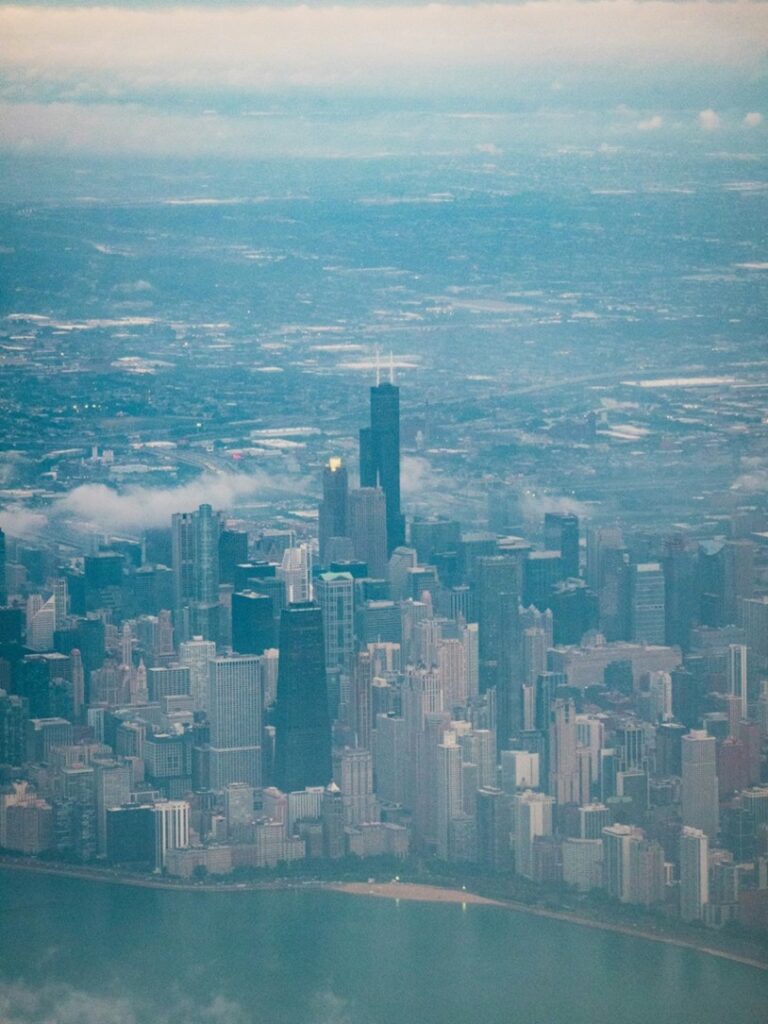
NEPA Without CEQ: Environmental Review Under Trump and Seven County
Written by Benjamin Behimer and Christophe Courchesne
Introduction
Long a cornerstone of federal environmental law, the National Environmental Policy Act of 1969 (NEPA) has been the target of a series of judicial and executive attacks in 2025. Below, we provide a brief description and history of NEPA, including legislative history, before examining how the 2025 rescission of CEQ’s government-wide regulations and the Supreme Court’s decision in Seven County reshape the practical future of NEPA litigation.
I. NEPA and Congressional Intent
NEPA passed with overwhelming support in both chambers of Congress in 1969 and was signed into law by President Richard Nixon on January 1, 1970.[1] Congress set out NEPA’s purpose, inter alia, in Section 101:
[I]t is the continuing policy of the Federal Government . . . to use all practicable means and measures . . . to create and maintain conditions under which man and nature can exist in productive harmony, and fulfill the social, economic, and other requirements of present and future generations of Americans.[2]
Congress also recognized that there had been no uniform national policy or guidance for managing the environment and its natural resources.[3] It indicated that one purpose of NEPA was to provide this policy.[4]
Section 102 implemented “action-forcing procedures” to ensure that the policy goals in Section 101 were met.[5] Congress directed that all other federal laws should be interpreted and applied in accordance with Section 102 “to the fullest extent possible.”[6] It also required all agencies of the Federal Government to prepare a “detailed statement,” i.e., an environmental impact statement (EIS), for all “major Federal [sic] actions significantly affecting the quality of the human environment.”[7] The House’s Conference Report provided a succinct summary of the elements that were to be considered in an EIS:
[T]he environmental impact of the proposed action, any adverse environmental effects which can not [sic] be avoided should the proposal be adopted, alternatives to the proposed action, the relationship between the short-term uses of the environment and the maintenance and enhancement of long-term productivity, and any irreversible and irretrievable commitments of resources which would be involved.[8]
In practice, agencies do not undertake EISs for most projects. If the agency responsible for drafting the EIS is uncertain whether the major federal action[9] will significantly affect the environment, it will prepare an environmental assessment (EA).[10] An EA has less stringent requirements than an EIS and is significantly shorter.[11] A common conclusion of an EA, a finding of no significant impact (FONSI), is the endpoint of the process.[12] Depending on whether the agency finds that its action will have significant environmental effects, it will prepare either a FONSI or an EIS.[13] If the agency determines that there will be no significant environmental effects, it will issue a FONSI that explains its reasoning for finding no significant impacts.[14] If it finds that the project will have significant effects, it will prepare a full EIS.[15]
II. “Purely Procedural”
In the early years following NEPA’s enactment, the U.S. Court of Appeals for the D.C. Circuit established that NEPA is primarily a procedural statute.[16] Although the court did not completely foreclose the possibility that a court could reverse an agency’s substantive decision, there has never been a successful challenge of an agency’s substantive decision under NEPA.[17] In other words, NEPA requires agencies to study the environmental consequences of their proposals through a prescribed process that includes substantial public involvement but does not dictate what agencies ultimately do. The statute reflects Congress’s insistence that agencies carefully consider the environmental values articulated in the law, without imposing those values on every decision.
In May 2025, the Supreme Court issued its most recent NEPA decision, Seven County Infrastructure Coalition v. Eagle County, confirming that NEPA is “purely procedural” and “‘does not mandate particular results, but simply describes the necessary process’ for an agency’s environmental review of a project.”[18] The Court further stated that in determining whether an “agency action was arbitrary and capricious[19] due to a deficiency in an EIS,” the reviewing court may only review whether “the agency has addressed environmental consequences and feasible alternatives as to the relevant project”—not whether the agency’s decision to move forward with the project was the “correct” one.[20] Seven County’s other key holdings are discussed below.[21]
III. The Council on Environmental Quality
NEPA Section 202 established the Council on Environmental Quality (CEQ).[22] The CEQ’s statutory purpose is to advise the president by compiling information to help determine whether NEPA’s policy goals are being met and to recommend national policies that further NEPA’s goals, as set out in Section 101.[23] Notably, NEPA was not the direct source of CEQ’s authority to create and enact NEPA regulations. Instead, CEQ’s authority to create NEPA regulations has historically been grounded in an executive order issued by President Jimmy Carter in 1977.[24] Pursuant to Carter’s executive order, CEQ promulgated final NEPA implementing regulations on November 29, 1978, to “accomplish three principal aims: to reduce paperwork, to reduce delays, and to produce better decisions.”[25]
Aside from technical changes and an amendment to one provision in 1986, CEQ’s NEPA implementing regulations remained unchanged for 40 years.[26] President Trump broke this streak in 2017 when he issued an executive order directing CEQ to identify and propose changes to the regulations.[27] CEQ proposed regulations and, after notice and comment, these updated regulations were adopted in 2020.[28] These changes were reversed shortly thereafter under President Biden in two phases—the first in 2022,[29] and the second in 2024.[30] In the background sections of both the 2022 and 2024 CEQ final rules, CEQ emphasized the important role its regulations have played in realizing NEPA’s purposes:
[T]he NEPA regulations reflected CEQ’s interpretation of the statutory text and Congressional intent, expertise developed through issuing and revising the CEQ guidelines and advising Federal agencies on their implementation of NEPA, initial interpretations of the courts, and Federal agency experience implementing NEPA. The 1978 regulations reflected the fundamental principles of informed and science-based decision making, transparency, and public engagement Congress established in NEPA.[31]
All seemed well again until, in 2024, a panel of the D.C. Circuit held in Marin Audubon, sua sponte, that all CEQ NEPA regulations were ultra vires.[32] Without engaging with the nearly half-century of experience of the regulations or receiving briefing from the parties, the court’s reasoning was simple and superficial: under separation-of-powers principles, the executive cannot create laws through an executive order.[33] In other words, because CEQ’s rulemaking authority stemmed from an executive order rather than legislation, CEQ’s regulations are not legally enforceable. Marin Audubon was the perfect opening for President Trump to take CEQ’s regulations off the books.
IV. Executive Order 14154 and the Rescission of CEQ’s NEPA Regulations
On January 20, 2025, President Trump issued Executive Order 14154: Unleashing American Energy.[34] A lengthy read, the Order begins by setting out background and policy goals: namely, that the U.S. is rich in natural resources and that it is the policy of the U.S. to remove as many regulations as possible to extract those resources.[35] Specifically, Trump ordered an “immediate review” of all agency actions that might impose an “undue burden” on domestic energy resource development.[36] He revoked Carter’s executive order authorizing CEQ to issue NEPA regulations and directed the CEQ Chairman to propose rescinding CEQ’s NEPA regulations and to provide “guidance on implementing the National Environmental Policy Act.”[37]
CEQ issued an interim final rule on February 25, 2025, rescinding its NEPA regulations and requesting public comments.[38] It delayed the rule’s implementation until April 11, 2025.[39] Although CEQ’s authority for issuing an interim final rule under the APA’s “good cause” exemption was certainly questionable under the circumstances, it was ultimately not challenged, likely due to the D.C. Circuit’s determination that CEQ’s NEPA regulations were ultra vires.[40]
Despite CEQ’s rescission of its NEPA regulations, there is still binding and nonbinding authority that agencies and NEPA practitioners can rely on. The first place to look is NEPA itself. Caselaw and binding agency-specific NEPA regulations (i.e., agency rules that do not constitute nonbinding guidance) are also applicable. Agency regulations themselves are now also in transition, as agencies work to implement CEQ’s directive to modify their rules to expedite permitting;[41] some agencies have moved to rescind their own procedures altogether.[42] Regarding nonbinding guidance, CEQ published a memorandum on September 29, 2025, in which it recommended that agencies voluntarily rely on its rescinded NEPA regulations.[43] It also discussed and urged agencies to keep in mind the Supreme Court’s decision in Seven County, which it correctly described as a “landmark decision.”[44]
V. The Supreme Court’s Seven County Decision: Deference
In Seven County, the Court reversed the U.S. Court of Appeals for the D.C. Circuit’s holding that the U. S. Surface Transportation Board’s EIS—which considered the environmental effects of an 88-mile railroad line construction project to connect the oil-rich Uinta Basin to a national rail network—was inadequate.[45] The Court’s reasoning was twofold: first, the D.C. Circuit “did not afford the Board the substantial judicial deference” that NEPA requires;[46] second, contrary to the D.C. Circuit’s holding, NEPA did not require the Board to address the upstream or downstream environmental effects of the project.[47]
Regarding the “substantial judicial deference” that NEPA requires, the Court held that NEPA is “purely procedural,”[48] and that “[t]he bedrock principle of judicial review in NEPA cases can be stated in a word: Deference.”[49] The Court reasoned that agencies, not courts, should “determine whether and to what extent to prepare an EIS . . . ” because agencies better understand the relevant facts of projects under their authority.[50] The Court further emphasized that courts should defer to agencies “so long as [the agency’s decision] fall[s] within a broad zone of reasonableness.”[51]
Regarding the Court’s holding that agencies need not consider the upstream or downstream environmental effects of the project, the Court stated that substantial deference should also be afforded to agencies regarding the scope of the environmental effects to be addressed.[52] In Seven County, the Board determined in its EIS that the possible upstream environmental effects of building the rail line—namely, a potential increase in oil drilling in the Uinta Basin—fell outside the scope of its EIS because the Board would not have authority over potential future oil drilling projects in the Basin, and any environmental effects from future drilling projects were speculative and attenuated from the rail line project.[53] The Board similarly reasoned that the possible downstream environmental effects of the project—namely, that oil from the Uinta Basin would be transported to refineries elsewhere in the U.S.—fell outside the scope of its EIS because the Board would not have authority to regulate the oil refining process, and it would be difficult to identify which refineries to analyze in the EIS.[54]
The Court held that the Board’s decision not to analyze the upstream or downstream effects of the rail line project should have been afforded substantial deference, and that “when the effects of an agency action arise from a separate project—for example, a possible future project or one that is geographically distinct from the project at hand—NEPA does not require the agency to evaluate the effects of that separate project.”[55] Ultimately, the Court’s holding that agencies need not analyze the environmental effects of projects separate in time or place from the current project relied on the reasoning that such projects break the proximate chain of causation between the environmental effects of such projects and the project under review.[56]
The Court emphasized that through this decision, it was making a “course correction”[57] to bring what it deemed “overly intrusive (and unpredictable)” judicial review in NEPA cases back to NEPA’s statutory language.[58] In this regard, Seven County—empowering agencies to disregard NEPA’s statutory values—is in arguable contradiction with the Court’s recent decisions scaling back agency authority.[59] In describing the required level of judicial deference to agency decision making, the Court quoted Baltimore Gas: “[b]lack-letter administrative law instructs that when an agency makes those kinds of speculative assessments or predictive or scientific judgments, and decides what qualifies as significant or feasible or the like, a reviewing court must be at its ‘most deferential.’”[60] But what was the Court referring to when it wrote “those kinds”?
By “those kinds of speculative assessments or predictive or scientific judgments,” the Court was attempting to draw a broad category of agency decisions that, if speculative, predictive, or scientific, should be deferred to. However, the Court misapplied the language from Baltimore Gas. The Court in Baltimore Gas was referring specifically to situations in which the agency is making decisions at the frontiers of science[61]: “a reviewing court must remember that the Commission is making predictions, within its area of special expertise, at the frontiers of science. When examining this kind of scientific determination, as opposed to simple findings of fact, a reviewing court must generally be at its most deferential.”[62]
Despite its holding that NEPA’s bedrock principle is deference, the Seven County decision failed to correctly distinguish between agency decisions that are made at the frontiers of science—such as the Nuclear Regulatory Commission’s decision regarding long-term nuclear waste storage in Baltimore Gas[63]—from those decisions that are more common or more easily understood. Whether courts will be sympathetic to this distinction remains to be seen.
What’s Next for NEPA?
NEPA was one of the first comprehensive federal environmental statutes, in which Congress recognized that “each person has a responsibility to contribute to the preservation and enhancement of the environment.”[64] Although NEPA is “purely procedural,”[65] it was enacted with the hope that, by following NEPA’s required procedures, agencies would consider the significant environmental effects of their actions.[66] That aspiration has never been more under threat, and the statute’s roles as a sentinel and a bulwark against environmental degradation will depend on how advocates, agencies, and courts navigate the coming years of disputes in the new world of NEPA implementation under Trump and Seven County.
Author Bio:
Ben Behimer is the Senior Managing Editor of the Vermont Law Review for Volume 50 at Vermont Law and Graduate School. His interests focus on environmental and energy law, and he wrote this piece drawing on his work with Vermont Law and Graduate School’s Environmental Advocacy Clinic, where he has worked on NEPA-related litigation. He thanks Professor Christophe Courchesne for his guidance and feedback on this piece.
[1] National Environmental Policy Act, BALLOTPEDIA, https://ballotpedia.org/National_Environmental_Policy_Act (last visited Dec. 21, 2025) (see sidebar on right).
[2] 42 U.S.C. § 4331(a) (emphasis added). Section 101 also lists more specific policy goals, such as assuring a safe and healthful environment for all Americans and recognizing that “each person has a responsibility to contribute to the preservation and enhancement of the environment.” Id. § 4331(b)(2), (c).
[3] S. Rep. No. 91-296, at 8 (1969).
[4] Id.
[5] Id. at 19.
[6] 42 U.S.C. § 4332.
[7] Id. § 4332(C).
[8] H.R. Rep. No. 91-765 (1969).
[9] The phrase “major federal actions” has been construed broadly, such that it is easier to describe what does not constitute a major federal action than to describe what does: “[m]ajor federal actions do not include nonfederal actions with ‘no or minimal federal funding,’ federally funded actions where the agency lacks oversight or control over the subsequent use of the funds, or other circumstances where the federal agency ‘does not exercise sufficient control’ over the outcome of the project.” Kristen Hite & Heather McPherron, Cong. Rsch. Serv., IF12560, National Environmental Policy Act: An Overview 1 (2025).
[10] National Environmental Policy Act Review Process, EPA, https://www.epa.gov/nepa/national-environmental-policy-act-review-process (last updated Apr. 11, 2025).
[11] See Kristen Hite, supra note 9, at 2 tbl. 1 (2023) (comparing EA and EIS requirements).
[12] National Environmental Policy Act Review Process, supra note 10.
[13] Id.
[14] Id.
[15] Id.
[16] Calvert Cliffs’ Coordinating Comm., Inc. v. U. S. Atomic Energy Comm’n, 449 F.2d 1109, 1114 (D.C. Cir. 1971).
[17] Id. at 1115 (stating that courts “probably” could not reverse a substantive decision on the merits).
[18] Seven Cnty. Infrastructure Coal. v. Eagle Cnty., Colorado, 145 S. Ct. 1497, 1510 (2025) (quoting Robertson v. Methow Valley Citizens Council, 490 U.S. 332, 350 (1989)).
[19] NEPA challenges are typically brought under section 706 of the Administrative Procedure Act because NEPA itself does create a cause of action. Eli Dourado, Much More Than You Ever Wanted to Know About NEPA, The Ctr. for Growth & Opportunity (Oct. 20, 2022), https://www.thecgo.org/benchmark/much-more-than-you-ever-wanted-to-know-about-nepa/. APA § 706 requires that a “reviewing court shall . . . hold unlawful and set aside agency action, findings, and conclusions found to be arbitrary, capricious, an abuse of discretion, or otherwise not in accordance with law.” 5 U.S.C. § 706(2)(A).
[20] Seven Cnty, 145 S. Ct. at 1511.
[21] See infra Part V.
[22] 42 U.S.C. § 4342.
[23] 42 U.S.C. § 4344.
[24] Exec. Order No. 11991, 42 Fed. Reg. 26967 (1977).
[25] National Environmental Policy Act—Regulations, 43 Fed. Reg. 55978, 55978 (Nov. 29, 1978).
[26] National Environmental Policy Act Implementing Regulations Revisions Phase 2, 89 Fed. Reg. 35442, 35446 (May 1, 2024).
[27] Id.
[28] Id.
[29] National Environmental Policy Act Implementing Regulations Revisions, 87 Fed. Reg. 23453 (Apr. 20, 2022).
[30] National Environmental Policy Act Implementing Regulations Revisions Phase 2, 89 Fed. Reg. 35442 (May 1, 2024).
[31] Id. at 35446 (emphasis added).
[32] Marin Audubon Soc’y v. Fed. Aviation Admin., 121 F.4th 902, 908 (D.C. Cir. 2024).
[33] Id. at 908.
[34] Exec. Order No. 14154, 90 Fed. Reg. 8353 (Jan. 20, 2025).
[35] Id. at 8353–54
[36] Id. at 8354.
[37] Id. at 8355.
[38] Removal of National Environmental Policy Act Implementing Regulations, 90 Fed. Reg. 10610, 10612 (Feb. 25, 2025).
[39] Id.
[40] Marin Audubon Soc’y v. Fed. Aviation Admin., 121 F.4th 902, 908 (D.C. Cir. 2024). The APA allows agencies to dispense with “notice and public procedure” if it determines them to be “impracticable, unnecessary, or contrary to the public interest.” 5 U.S.C. § 553(b)(B). CEQ stated in its interim final rule that “the need to meet the deadlines in E.O. 14154 and to avoid agency confusion given the recent vacatur of CEQ’s 2024 Rule” made notice and comment impracticable and unnecessary. Removal of National Environmental Policy Act Implementing Regulations, 90 Fed. Reg. 10610, 10614 (Feb. 25, 2025). It is well established in administrative law that the need to meet a deadline cannot, in itself, satisfy the good cause exemption. United States v. Gould, 568 F.3d 459, 480 (4th Cir. 2009) (“strict congressionally imposed deadlines, without more, by no means warrant invocation of the good cause exception”). Additionally, CEQ’s reasoning that “agency confusion” renders notice and comment unnecessary would be unlikely to satisfy the good cause exemption. United States v. Valverde, 628 F.3d 1159, 1166 (9th Cir. 2010) (“If ‘good cause’ could be satisfied by an Agency’s assertion that ‘normal procedures were not followed because of the need to provide immediate guidance and information[,] . . . then an exception to the notice requirement would be created that would swallow the rule’”) (quoting Zhang v. Slattery, 55 F.3d 732, 746 (2d Cir. 1995)).
[41] Council on Env’t Quality, Exec. Off. of the President, Memorandum for Heads of Federal Departments and Agencies, Implementation of the National Environmental Policy Act 1 (Feb. 19, 2025).
[42] For example, the USDA and DoD rescinded most NEPA regulations of the agencies under their purview in favor of more general, department-wide regulations. Federal Agencies Roll Out New NEPA Regulations, Greenberg Traurig (July 10, 2025), https://www.gtlaw.com/en/insights/2025/7/federal-agencies-roll-out-new-nepa-regulations; National Environmental Policy Act, 90 Fed. Reg. 29632, 29632 (July 3, 2025) (publishing an interim final rule and request for comments rescinding USDA’s NEPA regulations); Department of Defense Implementation of the National Environmental Policy Act, 90 Fed. Reg. 27857, 27857 (June 30, 2025) (providing notice that the Army, Navy, and Air Force are rescinding their NEPA regulations). Other agencies have taken different approaches; for instance, the DoI rescinded most of its NEPA regulations, but stated in its interim final rule that it would maintain most of its NEPA procedures in a Handbook separate from the Federal Register. Brandon Tuck et al., The New NEPA: Federal Agencies Overhaul Procedures for Environmental Reviews, Vinson & Elkins (July 11, 2025), https://www.velaw.com/insights/the-new-nepa-federal-agencies-overhaul-procedures-for-environmental-reviews/; National Environmental Policy Act Implementing Regulations, 90 Fed. Reg. 29498, 29498 (July 3, 2025).
[43] Council on Env’t Quality, Exec. Off. of the President, Memorandum for Heads of Federal Departments and Agencies, Implementation of the National Environmental Policy Act 3 (Sept. 29, 2025).
[44] Id. at 5.
[45] Seven Cnty. Infrastructure Coal. v. Eagle Cnty., Colorado, 145 S. Ct. 1497, 1507–08 (2025).
[46] Id. at 1508.
[47] Id.
[48] Id. at 1510.
[49] Id. at 1515.
[50] Id. at 1512.
[51] Id. at 1513.
[52] Id. at 1512.
[53] Id. at 1508–09.
[54] Id. The Court stated that the identity of refineries would depend on the refineries’ ability and willingness to receive oil from the Uinta Basin. Id. at 1509.
[55] Id. at 1515.
[56] Id. at 1516–17.
[57] Id. at 1514.
[58] Id. at 1513–14.
[59] Loper Bright Enters. v. Raimondo, 144 S. Ct. 2244, 2273 (2024) (“Courts must exercise their independent judgment in deciding whether an agency has acted within its statutory authority . . . . ”).
[60] Seven Cnty., 145 S. Ct. at 1512 (quoting Balt. Gas & Elec. Co. v. NRDC, 462 U.S. 87, 103 (1983)).
[61] Balt. Gas & Elec. Co., 462 U.S. at 103.
[62] Id. (emphasis added).
[63] Id. at 102.
[64] 42 U.S.C. § 4331(c).
[65] Seven Cnty., 145 S. Ct. at 1510.
[66] Robertson v. Methow Valley Citizens Council, 490 U.S. 332, 349 (1989) (NEPA “ensures that the agency, in reaching its decision, will have available, and will carefully consider, detailed information concerning significant environmental impacts . . . [and] ensures that important effects will not be overlooked or underestimated only to be discovered after resources have been committed or the die otherwise cast.”).









